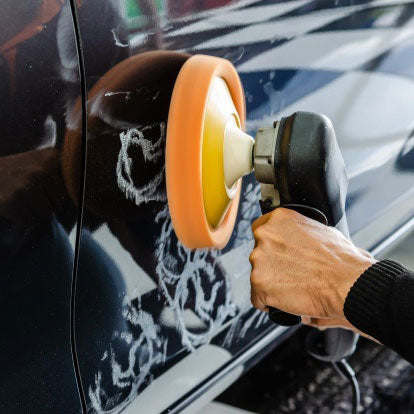Cosmetic tattooing is all about precision and art but even the most beautifully shaped brows or perfectly blushed lips can be ruined by one thing- infection. Preventing infection isn’t just about ticking off hygiene boxes, it’s about protecting your clients, building trust, and securing your reputation for the long run.
Whether you’ve been in the industry for years or you’re just starting your journey, it’s often the little mistakes that can cause the biggest problems. That’s why we are going to break down the 7 most common mistakes to avoid so your studio stays safe, your clients stay healthy, and your work shines the way it should.
Skipping Proper Hand Hygiene

Starting with the basics and most commonly neglected step- hand hygiene.
It’s tempting to think gloves are enough, but they’re not magic shields. If your hands aren’t clean before you put them on, you’re just trapping bacteria inside a latex bubble. And if you don’t wash after removing them? You’re risking contamination all over again.
Best Practices:
- Wash hands thoroughly with liquid soap (bar soaps harbour bacteria) and water for at least 20 seconds before and after every client.
- Use alcohol-based hand sanitizers as a supplement, not a substitute.
- Avoid touching your face, phone, or other surfaces during procedures. Anything you may touch needs to be covered with a plastic barrier
- Keep nails short and clean bacteria love to hide under long nails.
Why It Matters:
Poor hand hygiene is one of the leading causes of cross-contamination in clinical settings. In cosmetic tattooing, where you’re working with broken skin, the stakes are even higher.
Using Non-Sterile Equipment

Your tools are an extension of your hands and if they’re not sterile, they’re a liability.
Reusing single-use items or failing to properly sterilize reusable tools can introduce harmful pathogens directly into your client’s skin. That’s not just risky it’s unethical and potentially illegal.
Best Practices:
- Use pre-sterilized, single-use needles and pigment caps.
- Autoclave reusable tools and test your sterilization equipment regularly.
- Store sterile items in sealed, clean containers until use.
- Never reuse gloves, razors, or barrier wraps.
Why It Matters:
Sterile equipment isn’t optional, it’s a legal and professional requirement. Failing to meet these standards can result in infections, allergic reactions, and even legal action.
Contaminating the Workstation

Your workstation should be a sacred space clean, organized, and protected from contamination.
Cross-contamination can happen in seconds. A gloved hand touches a phone, then a pigment jar. A used wipe sits too close to sterile tools. These tiny lapses can lead to major consequences.
Best Practices:
- Disinfect all surfaces between clients using hospital-grade disinfectants.
- Use disposable barrier films on machines, trays, and chairs.
- Keep clean and dirty zones clearly separated.
- Avoid clutter- less mess means fewer opportunities for contamination.
Why It Matters:
A clean workstation isn’t just about aesthetics, it’s about safety. Clients notice when your space is spotless, and it builds trust from the moment they walk in.
Improper Client Skin Prep

You wouldn’t paint on a dirty canvas, so why tattoo on unprepped skin?
Failing to properly clean and disinfect the skin before tattooing can introduce bacteria directly into the dermis. That’s a fast track to infection, inflammation, and unhappy clients.
Best Practices:
- Use approved antiseptic skin prep solutions (e.g., chlorhexidine or alcohol-based wipes).
- Shave the area if necessary, using a new disposable razor.
- Avoid touching prepped skin with anything unsterile.
- Let the prep solution dry completely before beginning the procedure.
Why It Matters:
Skin prep is your first line of defence against infection. It also sets the tone for a professional, clinical experience that reassures your client.
Ignoring Aftercare Instructions

Your work doesn’t end when the needle stops, it continues through healing.
Clients who don’t follow aftercare instructions are at higher risk of infection, poor pigment retention, and scarring. And guess what? If they don’t heal well, you get the blame.
Best Practices:
- Provide clear, written aftercare instructions tailored to the procedure.
- Verbally explain key points and answer questions before the client leaves.
- Include signs of infection to watch for (e.g., redness, swelling, pus).
- Offer follow-up support via text, email, or phone.
Why It Matters:
Aftercare is a shared responsibility. Educating your clients empowers them to protect their results and protects you from liability.
Reusing or Mishandling Pigments

Pigments are often overlooked in infection control, but they’re a common source of contamination.
Double-dipping needles into pigment jars or reusing caps can introduce bacteria into the pigment itself. Once contaminated, every client you use it on is at risk.
Best Practices:
- Use single-use pigment caps for each client.
- Pour pigments into disposable containers—never dip directly into the jar.
- Discard leftover pigment after each session.
- Store pigments in a clean, dry, temperature-controlled environment.
Why It Matters:
Contaminated pigments can cause infections, allergic reactions, and pigment rejection. Treat them with the same care as your needles.
Neglecting Training and Updates

Infection control is constantly evolving with science, regulations, and industry standards.
If you’re relying on what you learned five years ago, you’re probably missing something important. Staying updated isn’t just smart, it’s essential.
Best Practices:
- Complete accredited infection control courses regularly.
- Attend industry conferences, webinars, and workshops.
- Subscribe to updates from your local health authority.
- Review your studio’s protocols annually and update as needed.
Why It Matters:
Clients trust you to be informed and up-to-date. When you invest in education, you invest in your reputation and your own peace of mind.

BONUS TIPS
- Don’t tattoo when you’re sick. Even a mild cold can compromise your hygiene game.
- Keep your phone out of the workstation. It’s basically a petri dish.
- Document everything. If there’s ever a complaint or issue, having records helps protect you.
- Create a checklist. Infection control is easier when it’s part of your routine.
Cosmetic tattooing is about beauty, confidence, and transformation but none of that matters if your client walks away with an infection. By avoiding these seven common mistakes, you’re not just protecting your clients, you’re elevating your art form.
Infection prevention is a mindset. It’s about consistency, care, and a commitment to excellence. So stay sharp, stay clean, and keep practicing those brows, lips, and liners with confidence.
- Jaz Anna



